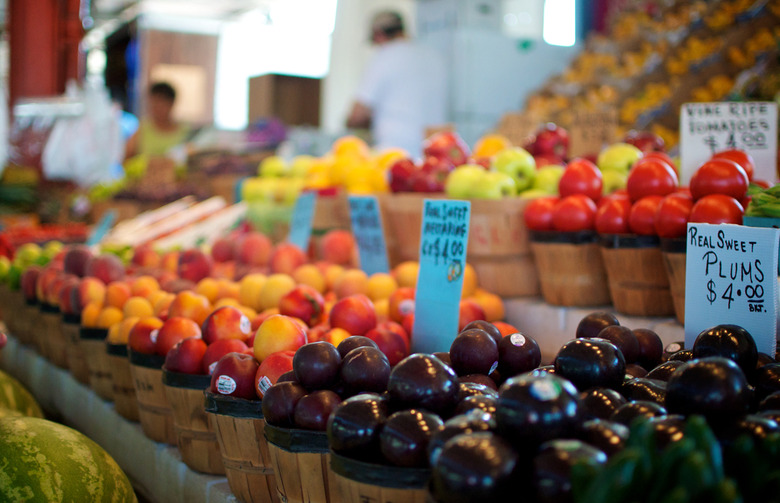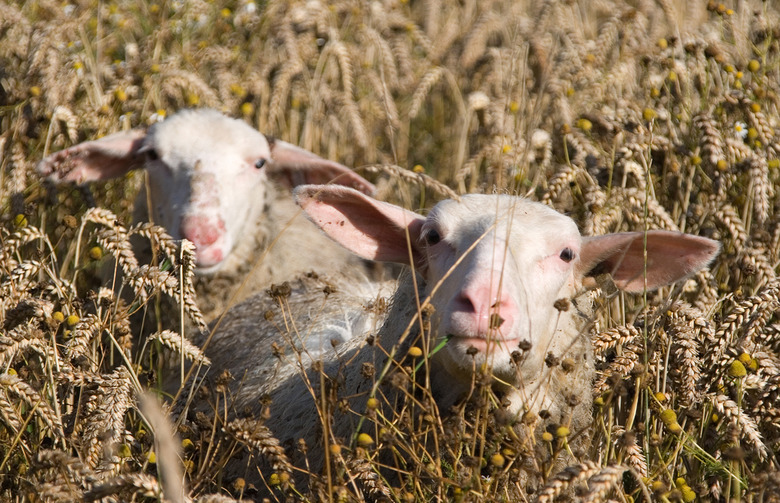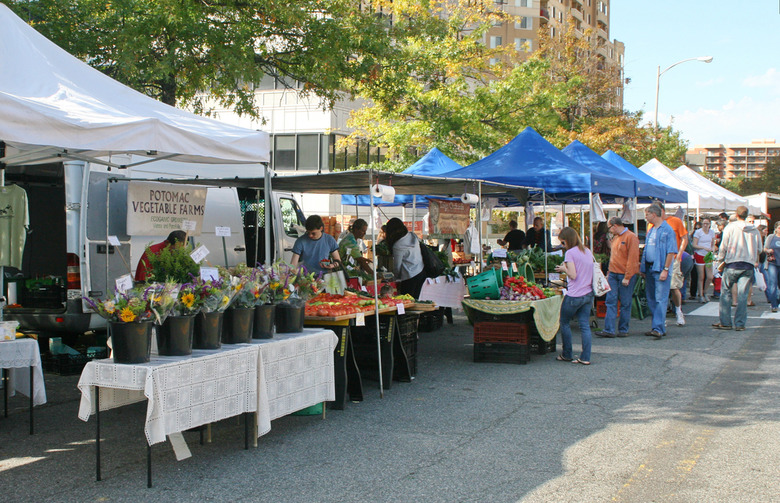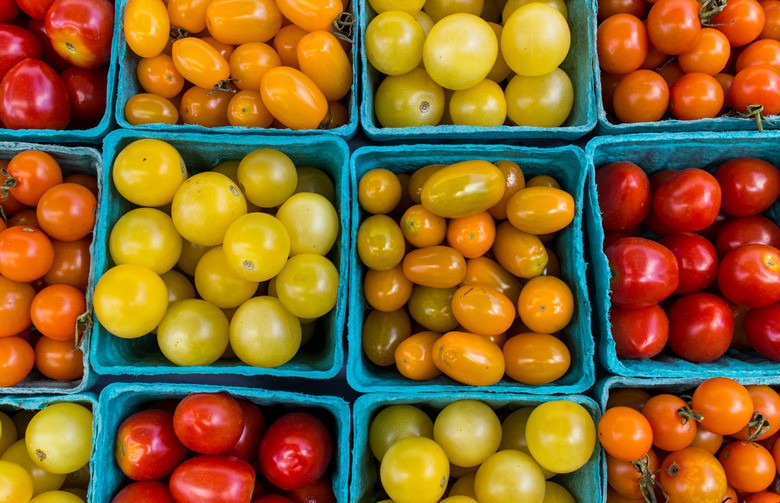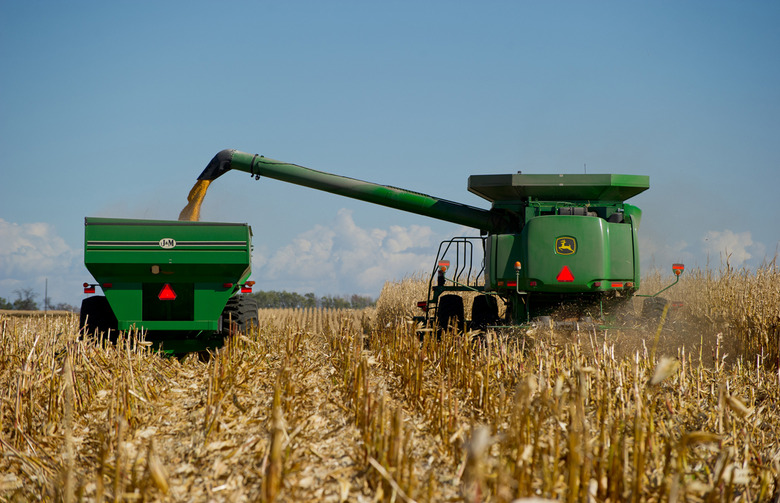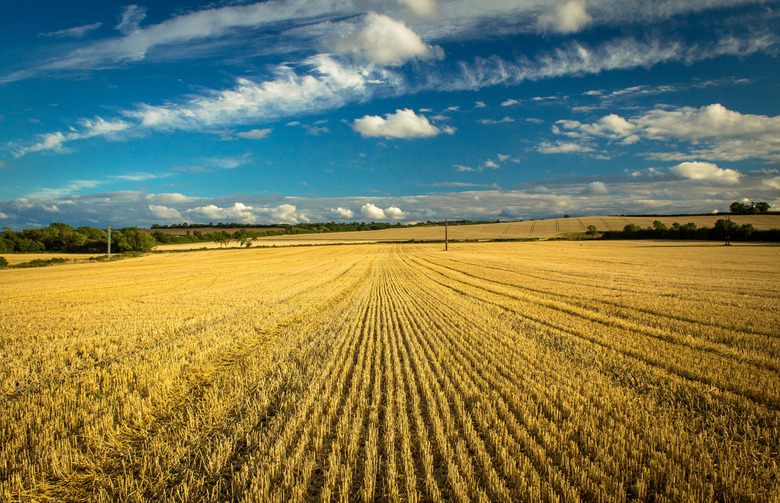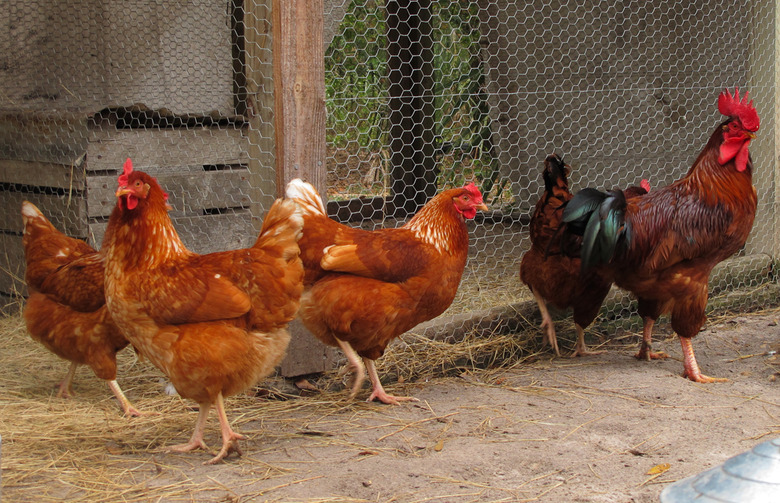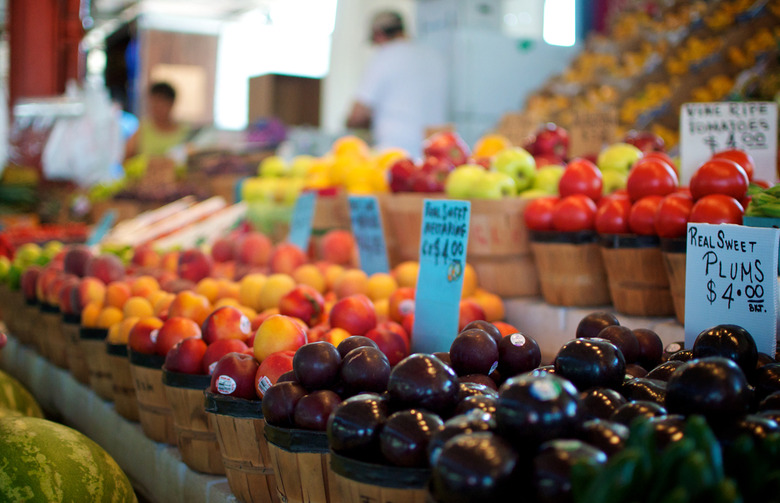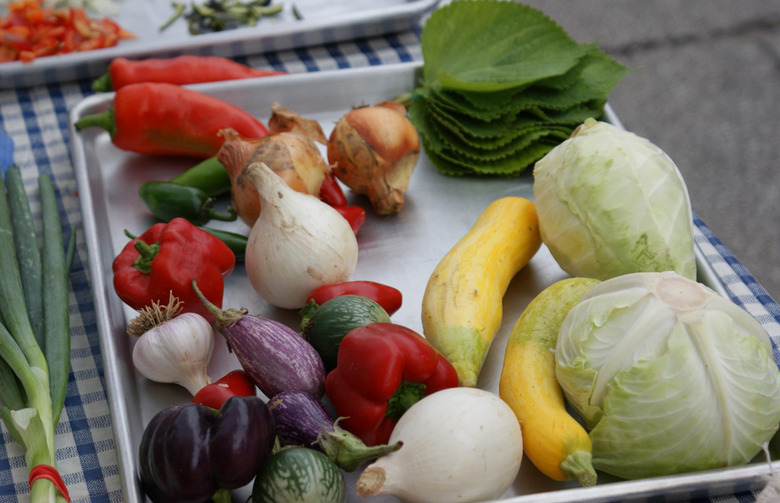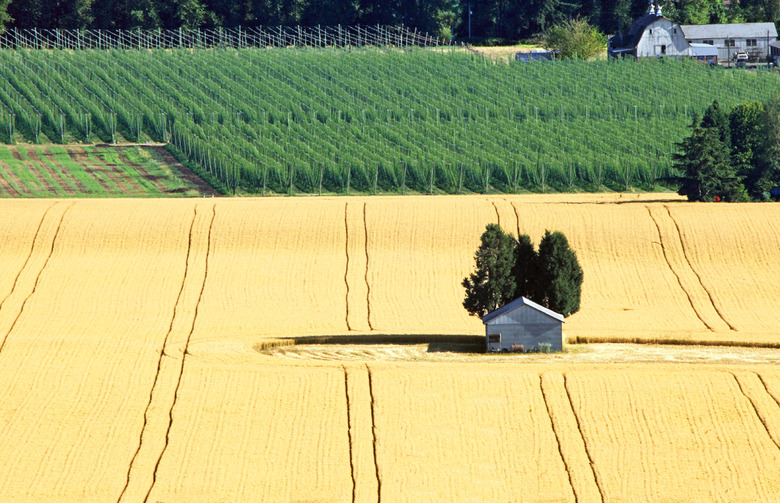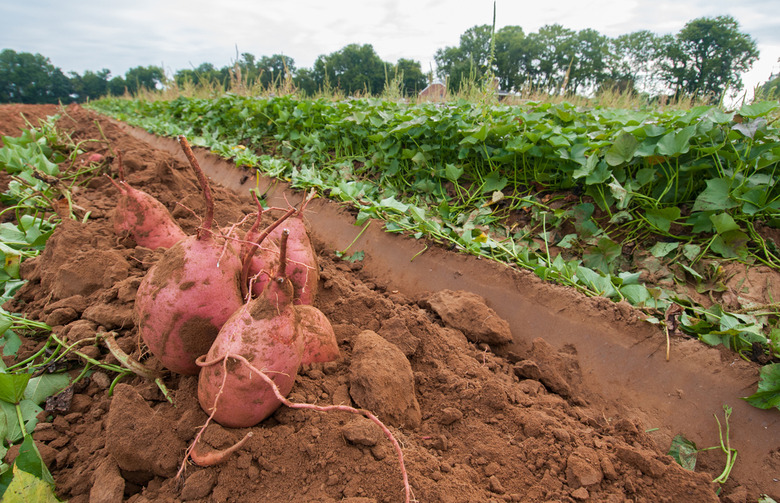10 Reasons Why Locally Harvested Food Is The Best
The modern food movement as we know it today — focused on seasonality, locality, and sustainable farming practices — is a reaction to the rise of industrial farming in the '50s. Icons in the movement, like Alice Waters, Carlo Petrini, and Michael Pollan, have become the spokespeople for this lifestyle.
But why should people adopt this approach to food? "Eating local" means a lot more than a charming trip to the farmers market (which is, of course, a benefit). Locally harvested food gives buyers more power over their food choices, from the relationships they build with the individuals who actually grow their favorite produce to the noticeable difference in taste that they experience at the dinner table. Here are the top 10 reasons to opt for locally harvested foods next time you are planning your grocery list.
Biodiversity
Large chain supermarkets and industrial agriculture handed grocery stores and food suppliers the power to pick the varietals that we eat today. In the process, many unique and heirloom varietals have disappeared from shelves.
Community
Farmers markets provide the space for shoppers to communicate with food growers and like-minded locavores. Community Supported Agriculture (CSA) ventures have proven increasingly popular in urban areas across the country and provide a physical space for people to meet.
Economy
Buying local food means supporting local farmers and the local economy. Instead of spending money produced by large corporations that span the country and often the world, buying from your neighboring farmers means the money you spend will most likely go straight back into your local economy.
Food Safety
Food travels a long way to arrive at grocery stores. According to a 2001 report by Rich Pirog of Iowa State University's Leopold Center for Sustainable Agriculture, who researched the distance 33 different fruits and vegetables traveled to arrive at a Chicago market, food travels an average of 1,500 miles from farm to plate. Removing the middle man can eliminate the risk of cross-contamination or the transfer of harmful bacteria from food to food, such as the case with raw chicken coming into contact with produce.
Future of Farming
Buying local food today means ensuring the future of small-scale growers in the United States. At the peak of farming in the U.S., there were 6.8 million farms growing food for the just over 127 million residents in 1935. Today, slightly fewer than 200,000 farms grow roughly 60 percent of all the produce in the United States.
GMO Avoidance
GMO farming practices are not economically viable for small-scale farmers, meaning the fruits and vegetables you can find at your local farmers market have a better chance of being GMO-free, unlike the factory-farmed food at most grocery stores.
Nutrition
Fresh produce loses nutrients quickly. For that reason, the less distance your food has to travel, the better. According to a study conducted at the University of California, vegetables can lose 15 to 55 percent of their vitamin C content within a week.
Seasonality
Pumpkins in the fall, berries in the summer, and young greens in the spring — cooking according to the seasons means your meals will have the freshest taste possible. However, eating seasonally is easier for those in state with temperate climates and a long growing season, like California versus states like North Dakota, where certain seasons may only produce one or two local vegetable crops.
Sustainability
Not all farmers at farmers markets are organic farmers, making the question of how sustainable the locavore movement is a bit muddied. However, the close proximity and social relationships between growers and consumers means that if there is more of a demand for organic produce, then those farmers will probably try to meet it — at least that's what rural sociologist Clare Hinrichs of Pennsylvania State University thinks. However, switching from conventional farming methods to organic farming is an expensive process. Still, the shorter distance you food travels to market the smaller the carbon footprint where gasoline and travel is concerned.
Taste
Just as food loses nutrients, it also loses flavor over time. Locally harvested food is picked at peak ripeness for the best flavor, and often lands at the market within 24 hours. The chemical makeup of fruits and vegetables changes over time, and long distances mean cells begin to break down and sugars turn to starches.
